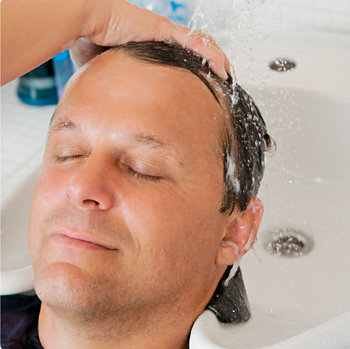
Strands of hair naturally get thinner and weaker with age. Research shows that after age forty, certain hair cells, called melanocytes, exhaust their ability to produce pigment, resulting in graying hair. DNA damage from smoking, sun exposure, and other factors can speed up that process, according to a 2009 study in the journal Cell. Hair loss due to heredity affects about thirty million American women and fifty million American men beginning as early as age thirty, although other factors, such as nutrition, medication side effects, and stress, can also cause hair to thin and fall out more rapidly. But your hair doesn’t have to reveal your age. Here are some tricks to keep your tresses in top shape and instantly look younger.
You might not think about protecting your hair from ultraviolet rays, especially outside of summer, but hair loses its natural UV defenses as it ages, and the resulting sun damage can speed up graying and make hair brittle and dull. Adding UV protection to your hair-care routine year-round can prevent that wear and tear, and if you’ve dyed your hair, can keep hair color from fading.
Whether you choose to color your salt and pepper strands or just keep them shiny and lustrous (read: younger-looking) is up to you. Gray hair is coarser and doesn’t reflect light as well, and like the rest of your skin, your scalp produces less oil as you get older. Combined, these factors can lead to dry, dull hair that breaks easily. Restoring moisture and shine are key to turning back the clock. Try using moisturizing hair masks and deep conditioners when you color to protect hair and add shine and softness. If you’re keeping your gray, look for shampoos and conditioners that cater to silver strands to prevent yellowing.
If you decide to dye, both semipermanent and permanent dyes can add depth and make hair look fuller. But choose your colors carefully. Harsh, one-color dye jobs can age you, so opt for a dye that’s within a few shades of your natural color, and add highlights to soften the look. And if you’ve been wearing your hair in the same style for the last decade, talk to your stylist about trying out a more modern look that adds volume. Once you hit forty, women should avoid too-long tresses (more than six inches past your shoulders) because heavy hair pulls on sagging skin, emphasizing wrinkles.
If your hair loss is sudden or in a single spot, or if you suspect there’s another factor involved, like stress or medication side effects, see your dermatologist to determine the cause. For most people, hair loss is hereditary. To help slow it down, focus on nourishing and protecting your roots. First, exercise to boost circulation to your scalp, which stimulates follicles to grow healthy new hair. Next, feed your hair. Hair is made of protein, so load up on protein-rich foods, such as eggs or cottage cheese, to give hair the building blocks it needs. Biotin, or vitamin B7, forms the basis of hair cells, and a deficiency can cause brittleness or even hair loss. Good sources of B7 include avocados, eggs, milk, nuts, and whole grains.

Although there is no research that shows high doses can reverse hair loss in healthy people, some dermatologists suggest supplementing with up to 5 milligrams biotin daily to give hair a boost (the U.S. Recommended Dietary Allowance [RDA] for biotin is 300 micrograms). It’s nontoxic and inexpensive if you’d like to try it, but check with your doctor before popping a pill, since biotin may increase the effects of lipid-lowering medications. If you need to bring in the big guns, topical minoxidil (Rogaine) and oral finasteride (Propecia) may help regrow hair or slow hair loss, but they carry side effects such as burning or stinging with minoxidil and even birth defects with finasteride, and both have to be used indefinitely to keep working.